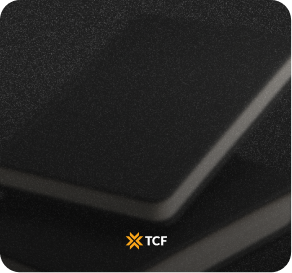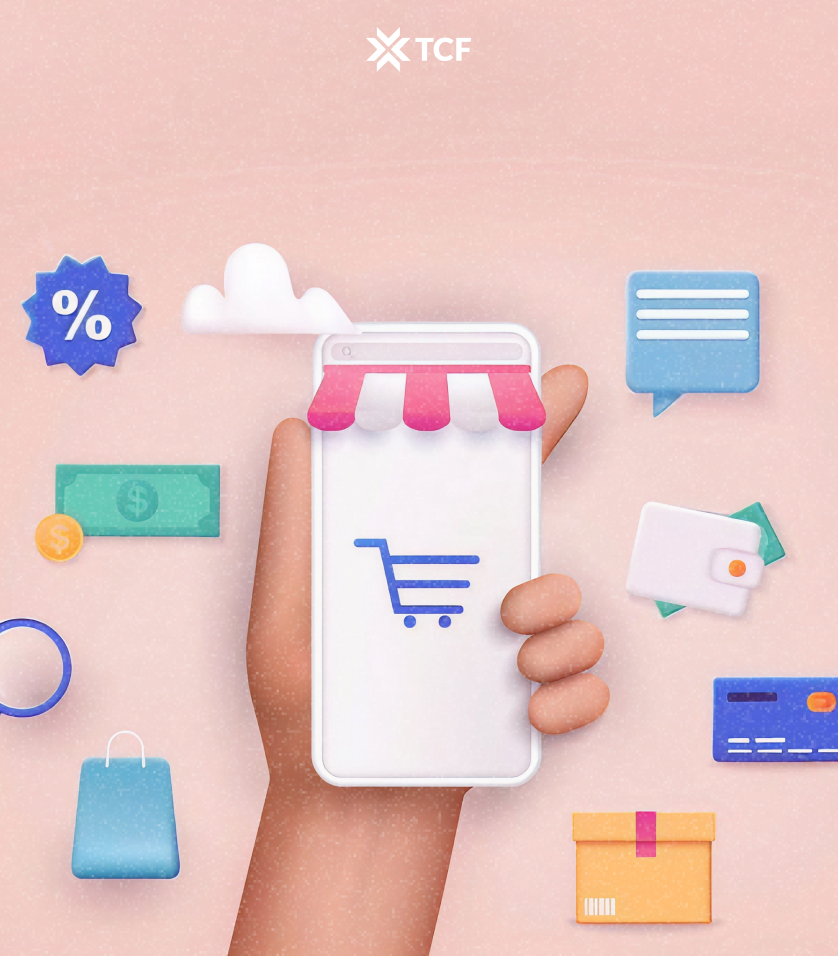Let’s be honest. If you’ve run an online store for more than five minutes, you’ve seen the same trend predictions recycled every January: AI is taking over, personalization is everything, and mobile shopping is still a thing (shocker).
But here’s the thing: 2025 really is a turning point. Between TikTok Shop changing the way people buy, AI tools actually delivering ROI, and customers demanding faster, greener, more flexible everything, the way we run ecommerce businesses is evolving fast. And if you're not adapting, you're losing ground.
This guide is for giving you a clear signal from the noise: what’s worth acting on, what you can skip for now, and how to make smart decisions based on your store’s size, stage, and goals.
Whether you’re a solo founder wearing 17 hats, an in-house marketer planning Q3, or somewhere in between, this post will help you cut through the clutter and walk away with real ideas you can actually use.
Let’s get into the trends that matter (and none of the ones that don’t).
[[cta5]]
The Ecommerce Trends That Actually Matter in 2025
From smarter tech to shifting customer behavior, these are the ecommerce trends shaping what growth looks like right now. Let’s break down what’s changing and how to make it work for your store.
1. AI-Powered Personalization & CX
Yes, everyone’s talking about AI, but for good reason. This isn’t fluff. When done right, AI-driven personalization directly boosts AOV, retention, and conversion. And in 2025, it’s more accessible than ever.
According to McKinsey, effective AI-driven personalization can cut acquisition costs by up to 50 percent, lift revenue 5 to 15 percent, and boost marketing ROI 10 to 30 percent, making it one of the highest-impact plays for lean ecommerce teams.
Shopify plugins like Rebuy customize product displays based on real-time behavior. Klaviyo segments customers using predictive analytics. Gorgias turns support chats into upsell moments with built-in product suggestions.
You don’t need a dev team or a six-figure budget to make it work. Most AI tools plug into your existing stack in minutes.
Use this if: You’re running lean but want to sell smarter, especially if you have multiple products or customer types.
Quick start: Set up a personalized product carousel, build a Klaviyo flow for high-intent shoppers, or try an AI chatbot that recommends products in real time.
2. Social Commerce & TikTok Shop
Shoppable content is now table stakes. TikTok, Instagram and Facebook Shops let customers buy directly inside the apps they already use daily.
TikTok is leading the way with live selling, creator product hauls, and viral demos driving serious conversions. 43.8% of U.S. TikTok users made at least one purchase on TikTok in 2024, a 27.3% increase from the previous year. And even with a potential US ban on the horizon, the platform remains a high-reward channel, just keep your strategy agile and diversify across platforms.
Social commerce works best for visually appealing, trend-driven products. Think beauty, fashion, gadgets, wellness, and home accessories.
Use this if: Your audience is active on TikTok or Instagram and your products photograph or demo well in short-form content.
Quick start: Set up a TikTok Shop, tag products in Instagram Reels or Stories, and partner with a creator for a short demo or unboxing. Focus on content that blends naturally into feeds while giving people a clear path to buy.
3. AR Try-On & Immersive Shopping
Virtual try-on is a conversion tool now. Augmented reality (AR) lets customers see how products look on them or in their space before they buy, reducing hesitation and returns. No wonder products featuring 3D/AR visuals see an average 94% lift in conversion, along with up to 40% fewer returns.
Beauty, eyewear, fashion, and home decor brands are using AR to let shoppers try on lipstick shades, glasses, or place a sofa in their living room with a tap. Shopify and WooCommerce both support 3D product previews or AR integrations with tools like Perfect Corp, Cylindo, or Shopify AR.
AR is no longer reserved for big brands. It’s accessible, affordable, and surprisingly easy to launch.
Use this if: You sell anything visual that benefits from try-before-you-buy confidence.
Quick start: Add a 3D view or AR try-on option to one hero product. Promote it on your product detail pages and social channels. Even simple “tap to view in your room” features can boost engagement and reduce returns.
4. Livestream Shopping Events
Live selling blends entertainment and conversion. Think QVC meets TikTok: creators (or brands themselves) demo products live, answer questions in real time, and drop limited offers viewers can buy on the spot.
It’s already huge in Asia, and it’s catching on fast in the US, especially on TikTok, Instagram Live, YouTube, and apps like Whatnot. Conversion rates during live streams range from 9–30%, versus the usual 2–3% for static product pages.
You don’t need a full production setup to test this. A phone, a decent script, and the right host can drive real results.
Use this if: You sell demo-friendly products and want to drive urgency or clear inventory fast.
Quick start: Host a 30-minute product walkthrough on TikTok or Instagram Live. Add time-limited promo codes and answer live questions to boost engagement and sales. Partner with a creator if you’re camera-shy. They already know how to work a live crowd.
5. Sustainability That Builds Loyalty
More shoppers are factoring sustainability into their buying decisions, especially younger customers. 41% of Gen Z and 37% of Millennials factor sustainability into purchase decisions, and these shoppers are 27% more likely to buy sustainable brands than older cohorts.
Stores are responding with recyclable packaging, carbon-offset shipping, and green loyalty programs that reward eco-friendly choices. Some show impact stats on product pages or let customers choose lower-impact delivery options at checkout.
You don’t need to be 100% sustainable. Just show customers what you’re doing and make it easy to see.
Use this if: You want to increase brand trust, stand out in competitive categories, or turn sustainability into a retention tool.
Quick start: Switch to eco-friendly packaging, update your FAQ or About page with sustainability info, and add a visual badge or icon to highlight low-impact products across your store.
6. Mobile-First Shopping & App Behavior
Most online shopping now happens on mobile, and customers expect a fast, seamless experience. That means responsive design isn’t enough. Everything from load speed to navigation to checkout flow needs to be optimized for small screens.
Shoppers also prefer mobile apps when available. Users view 4.2× more products per session, have 15 % higher AOV, and cart abandonment drops to 20 %. They’re faster, offer better ecommerce personalization, and enable features like push notifications and saved payment info. Even without a custom app, brands can create app-like experiences using tools like Tapcart or by optimizing PWA (progressive web apps).
Use this if: Your site gets heavy mobile traffic or your product category involves impulse buys or frequent purchases.
Quick start: Simplify your mobile checkout flow, enable Apple Pay or Shop Pay, and audit your mobile experience for speed and clarity. If your repeat customer rate is strong, test launching a lightweight mobile app or branded PWA to increase retention.
7. Flexible Payments & BNPL
Giving shoppers more payment options, especially split payments and one-click checkouts, is one of the easiest ways to lift conversions right now.
Buy Now, Pay Later (BNPL) services like Klarna, Afterpay, and Affirm let customers split payments into installments without credit cards. Many shoppers, especially Gen Z and Millennials, now expect this at checkout and will abandon the cart if it’s missing. Merchants see conversion rates climb 20–35%, while average order values grow up to 45% thanks to BNPL.
Flexible checkout also means offering Apple Pay, Google Pay, Shop Pay, and regional e-wallets when relevant. The easier you make it to pay, the fewer drop-offs you’ll see.
Use this if: You sell mid- to high-ticket items or want to increase average order value.
Quick start: Add one BNPL option at checkout, display its availability on product pages, and enable fast checkout wallets to streamline mobile conversion.
8. Same-Day Delivery & High-Speed Fulfillment
More shoppers expect same-day or next-day delivery by default, especially in urban areas. Big players like Amazon, Walmart, and even TikTok Shop are pushing the standard higher, and smaller brands are adapting with micro-fulfillment centers, local 3PLs, and faster last-mile solutions.
This shift is about trust. When customers see a clear delivery window and fast shipping option, they’re more likely to complete the purchase and come back again. Fast-delivery options can lift checkout conversions up to 30%, with 53% of consumers willing to pay extra, and 66% expecting free fast shipping.
Returns and delivery convenience also matter. Pickup points, lockers, and transparent return policies reduce friction and increase confidence, especially for first-time buyers.
Use this if: You want to compete on experience, reduce cart abandonment, or grow repeat purchases.
Quick start: Show delivery estimates, offer at least one fast shipping method (even if paid), and explore local fulfillment options if you sell in high-density areas.
9. Smart Subscription Models
Subscriptions are shifting from novelty to strategy. More ecommerce brands are using them to lock in recurring revenue, improve retention, and make replenishment frictionless. Global subscription ecommerce is projected at $20.6 billion in 2025, growing to $46 billion by 2034 at a 9.4% CAGR.
This goes beyond monthly boxes. Think subscribe-and-save for consumables, early access memberships, curated product drops, or loyalty perks tied to a subscription. Flexible models, where customers can skip, swap, or cancel anytime, are key to keeping churn low.
With the right positioning, subscriptions can boost lifetime value and simplify forecasting without annoying your customer base.
Use this if: You sell replenishable goods, drop new collections regularly, or want to build deeper brand loyalty.
Quick start: Test a subscription option on your most frequently reordered product or offer a small discount for subscribers. Use tools like Recharge or Skio for flexible Shopify integration.
10. Omnichannel & Unified Shopping Journeys
People switch between apps, devices, and storefronts all the time, and they expect the journey to feel connected. They might discover your product on Instagram, check it out on desktop, buy it on mobile, and expect to return it in person or track it via email. Marketing campaigns using three or more channels boost purchase rates by 287 %, and omnichannel brands see revenue rise ~9.5 % annually, compared to 3.4 % for weaker rivals.
That means your storefront, support, fulfillment, and marketing all need to sync. Brands are centralizing customer data, inventory, and order tracking to create consistent, connected experiences across every touchpoint.
This also includes offline. Pop-ups, retail partners, and events can reinforce brand trust and bridge the gap between digital and physical.
Use this if: You’re already selling in more than one channel or plan to soon and want to reduce friction across the journey.
Quick start: Sync inventory across channels, connect your email and support tools with your store platform, and make sure customers can pick up, return, or engage wherever they shop.
Conclusion
You don’t need to chase every new feature or jump on every trend. But you do need to understand which shifts are shaping your customers’ behavior and which ones align with your goals, products, and resources.
The smartest brands aren’t the ones doing everything. They’re the ones doing the right things at the right time. That might mean doubling down on mobile, testing a TikTok Shop, or quietly improving fulfillment behind the scenes.
Start small. Pick two trends from this list that actually solve a current problem or unlock new growth for your store. Then test, measure, and adjust as you go.
2025 belongs to the brands that adapt with intention, not panic. Let this guide help you do exactly that.
[[cta5]]






.png)


.png)


.jpg)

.jpg)